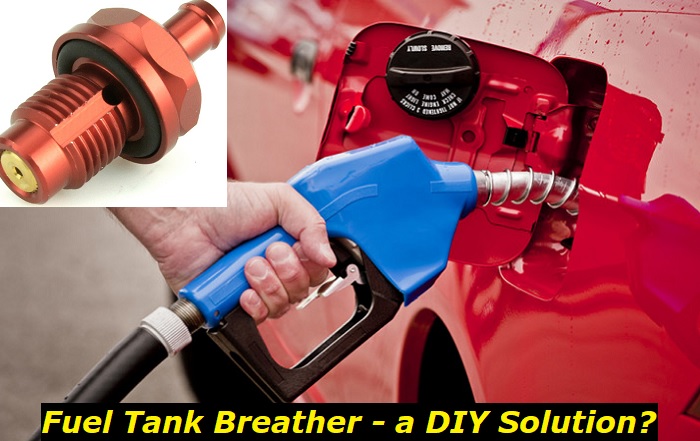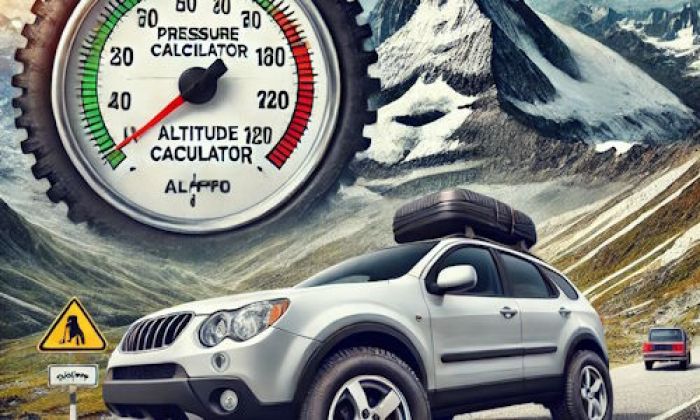A fuel tank is safe storage for flammable liquid such as diesel or petrol. From this tank, fuel is propelled to the engine, where it undergoes combustion. A good fuel tank must have valves or breathers to safely manage excessive fuel vapors. The tank's design should also be such that it can safely handle damage and provide the occupants of the car and those around a chance for survival. A fuel tank breather guarantees the mentioned safety features of the tank.
Fuel supply upgrades highlights
- Commonreasons:more power, need for efficient supply, higher pressure
- Average prices:$800 - $2,500
- Average waiting time:2 - 7 days
- Common problems:aftermarket parts problems, issues withbadinstallation
- DIY mods:usually,impossible
- Level of satisfaction:high

Features of a good fuel tank breather
- The breather should not have an excessively long hose. This is to avoid contributing to creating a vacuum or pressure build-up.
- The vent to the breather must not be bent, as this is how condensation happens. A bent hose will also attract insects building inside them.
- The breather should only let in clean air.
- A breather emitting hydrocarbon fumes must be directed away from any hot engine part. It should ideally be directed to the ground. For most cars, the breather is reconnected to the exhaust manifold. This ensures the occupants of the car and those outside the car don't smell the fuel gases.
- The breather should not accumulate dirt and mud as this will clog it, making it ineffective.
- A fuel breather should filter fuel smell and fumes from entering the car and the environment.
What are the common fuel system issues?
There are times when the car's fuel system will malfunction. Some of the reasons will emanate from the breather. As such, you will need an expert's eye and ear to pinpoint what is causing the issues. The fuel system starts from the fuel cap to the fuel tank and all the way to the injector and the plugs or nozzles. The different fuel system components will sometimes give similar or the same symptoms.
- Engine sputtering. And this becomes worse as you increase the speed
- Difficulty starting the car. At times the engine will fail to start completely
- A whining noise from the fuel tank
- Poor fuel efficiency
- Considerable loss of power when the car is under pressure. This can be when going uphill while towing or carrying heavy luggage
- The engine can stall at high temperatures
Symptoms of a bad fuel tank breather
The main cause of a fuel tank breather not working is a blockage. This issue has a number of symptoms among them;
- The motor vehicle stalling. This can happen a few minutes after refueling the car
- Poor performance of the vehicle
- Difficulty filling up the tank
- A hard time starting the car, and at times, the car won't start
- Erratic idling
You will notice from the above lists that the symptoms are similar. The faulty fuel filter will almost always show symptoms similar to those of a faulty breather. Depending on your car's make or model, it is advisable to check the fuel filter first before the fuel tank breather. It is easier and faster to check the filter before going to the breather.
What causes a fuel tank breather to fail?
Different fuel tank manufacturers place the fuel tank breather at different points. However, you are likely to find the breather underneath the vehicle. It is found close to the charcoal canister. Because of its location and its function, the breather is prone to corrosion.
There are instances when the breather can close and fail to open. The breather staying closed means that air won't enter the tank when fuel leaves for the engine. This causes the tank to have negative pressure. This makes the fuel be sucked back into the tank instead of flowing to the engine.
How to check your fuel tank breather
You need to conduct some tests to confirm that the fuel tank breather has problems. However, you will need some expertise and the necessary tools. For starters, be careful not to damage the fuel tank. Also, take care not to allow gas out into the air. Here are the steps to follow to test the breather;
- Locate the air vent line and connect a compressor to it. When you pump air into the vent, a gurgling sound should be heard if the breather is okay. There will be no sound if the like is blocked.
- Detach the canister from the fuel tank. This will let you know if there is a blockage since the breather lines are short. If the breather has a long plastic tubing, blowing compressed air through it should solve the clogging problem.
- You can use a wire or plastic tubing to probe the vent and see whether there are any blockages.
- The next step is draining the tank and allowing air to flow into it. Once the tank is dry, reconnect the breather and the fuel line. Conduct another air blow using the compressor and confirm there is no more blockage.
- After solving the problem, you can now refill the tank.
Can you make a fuel tank breather?
Yes, you can make a fuel tank breather. But the more pertinent question should be: is it really necessary? Depending on the make and model of your car, you will find that the breather will go for anything between $20 and $150. However, because of its location and the work involved in accessing it, you will find the mechanic's charge can go up to $120.
The fuel tank breather can be cleaned. If you have the expertise and are far from a garage, you can clean the breather, at least for the car to take you to a mechanic. When cleaning the pause, the first thing to do is take the charcoal canister off and blow air into them. Wipe the canister with an automotive cleaning product. Remember that the cleaning product you use is approved to be used near fuel.
Why conducting a proper fuel system diagnosis is important
As highlighted above, your car's fuel system is made up of an array of components. The symptoms for each of the components can vary, but other times they can overlap. It can be tough establishing whether it is the fuel filter or the fuel tank breather that has an issue, for example.
The fuel tank breather, if properly installed, should last the car's lifetime. It is one of the few car components that many drivers are unaware can go bad whenever you experience fuel system problems, so it is advisable to hire a professional.
The risk of trying to repair a fuel tank breather or the fuel system when you have now right experience or tools is that you might easily end up replacing the wrong thing. Get a machine to read for you the right error code. This way, you are certain where to look and what to do.
Conclusion
The risk of making your fuel tank breather is doing it wrong and repeating the same job in a few weeks. Even though there are numerous online tutorials on how to do it, it is risky to conclude that the breather is the problem, yet you haven't tested the entire fuel system.
As described earlier, the symptoms of a faulty fuel filter are quite similar to those of the fuel tank breather. A car can stall because the plugs are worn out, or there is a problem with the oxygen sensor. You should conduct a thorough diagnosis and test the fuel system to ensure you identify the exact component ailing. Moreover, when it comes to dealing with a faulty breather, the entire job is considerably cheap, given that you are never likely to experience the problem again.
About the authors
The CarAraC research team is composed of seasoned auto mechanics and automotive industry professionals, including individuals with advanced degrees and certifications in their field. Our team members boast prestigious credentials, reflecting their extensive knowledge and skills. These qualifications include: IMI: Institute of the Motor Industry, ASE-Certified Master Automobile Technicians; Coventry University, Graduate of MA in Automotive Journalism; Politecnico di Torino, Italy, MS Automotive Engineering; Ss. Cyril and Methodius University in Skopje, Mechanical University in Skopje; TOC Automotive College; DHA Suffa University, Department of Mechanical Engineering






Add comment